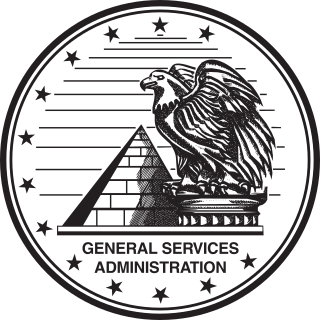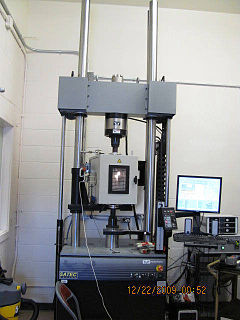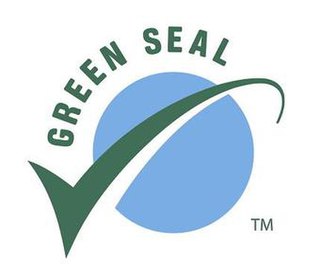
The General Services Administration (GSA) is an independent agency of the United States government established in 1949 to help manage and support the basic functioning of federal agencies. GSA supplies products and communications for U.S. government offices, provides transportation and office space to federal employees, and develops government-wide cost-minimizing policies and other management tasks.

Green building refers to both a structure and the application of processes that are environmentally responsible and resource-efficient throughout a building's life-cycle: from planning to design, construction, operation, maintenance, renovation, and demolition. This requires close cooperation of the contractor, the architects, the engineers, and the client at all project stages. The Green Building practice expands and complements the classical building design concerns of economy, utility, durability, and comfort. In doing so, the three dimensions of sustainability, i.e., planet, people and profit across the entire supply chain need to be considered.

The San Francisco Federal Building is an 18-story, 234 ft-tall (71.3 m) building at 90 7th Street on the corner of Mission and 7th streets in the South of Market neighborhood of San Francisco, California. The federal building was designed by the Morphosis architectural firm, as a supplement to the Phillip Burton Federal Building several blocks away. Thom Mayne of Morphosis designed the building using a juxtaposition of gray concrete walls, perforated metal panels, and custom, faceted wood ceilings. The building was expected to be completed in 2005, but construction issues and delays pushed the project completion to 2007.

Building science is the collection of scientific knowledge that focuses on the analysis of the physical phenomena affecting buildings. Building physics, architectural science and applied physics are terms used for the knowledge domain that overlaps with building science.

The Center for the Built Environment (CBE) is a research center at the University of California, Berkeley. CBE's mission is to improve the environmental quality and energy efficiency of buildings by providing timely, unbiased information on building technologies and design techniques. CBE's work is supported and guided by a consortium of building industry leaders, including manufacturers, building owners, contractors, architects, engineers, utilities, and government agencies. The CBE also maintains an online newsletter of the center's latest activities called Centerline.

Construction waste or debris is any kind of debris from the construction process. Different government agencies have clear definitions. For example, the United States Environmental Protection Agency EPA defines construction and demolition materials as “debris generated during the construction, renovation and demolition of buildings, roads, and bridges.”
The Naval Facilities Engineering Systems Command (NAVFAC) is the United States Navy's engineering command, providing the Navy and United States Marine Corps with facilities and expeditionary expertise. NAVFAC is headquartered at the Washington Navy Yard and is under the command of the Chief of Civil Engineers RADM John W. Korka

Green Seal is a non-profit environmental standard development and certification organization. Its flagship program is the certification of products, services, restaurants, and hotels. Certification is based on Green Seal standards, which contain performance, health, and sustainability criteria.
This article provides examples of green building programs in the United States. These programs span the public, private, and non-profit sectors, and all have the goal of increasing energy efficiency and the sustainability of the built environment.
The GovEnergy Workshop and Trade Show is an annual training event in the United States for federal facility energy professionals. The event is also attended by private industry professionals who help to monitor and control energy use in federal facilities.
Executive Order 13514 was an Executive Order, entitled Federal Leadership in Environmental, Energy, and Economic Performance, which U.S. President Barack Obama issued on October 5, 2009. EO 13514 was replaced by Executive Order 13693, titled Planning for Federal Sustainability in the Next Decade, issued by Obama on March 19, 2015. The Office of the Federal Environmental Executive, whose name was changed to the Office of Federal Sustainability by Executive Order 13693, is housed at the Council on Environmental Quality within the Executive Office of the President of the United States. Its role is to oversee policy, guidance, and implementation of the sustainability Executive Order.
Building Enclosure Commissioning (BECx) is a strict quality-focused process wherein the energy performance of a facility, system or assembly is evaluated and verified against defined objectives and criteria. The process itself is carried out by a commissioning team which uses reliable and accurate measures to verify that the project is meeting specific quality requirements outlined by the owner of the project. The commissioning process begins at project inception and runs through different construction phases, which include a pre-design phase, pre-construction phase and construction phase. Once the construction is finished, the commissioning process continues and becomes an ongoing routine in the life of the facility. Specific information regarding the commissioning process is outlined in the ASHRAE Guideline 0-2005: The Commissioning Process. This and several other technical support guidelines to the Guideline 0-2005 document provide specific information related to the commissioning process.

The James V. Forrestal Building is a low-rise Brutalist office building located in Washington, D.C., in the United States. Originally known as Federal Office Building 5, and nicknamed the Little Pentagon, the Forrestal Building was constructed between 1965 and 1969 to accommodate United States armed forces personnel. It is named after James Forrestal, the first United States Secretary of Defense. It became the headquarters of the United States Department of Energy after that agency's creation in 1977.
The Guiding Principles for Federal Leadership in High Performance and Sustainable Building are a set of established criteria developed by the U.S. Government for use by federal agencies committed to "federal leadership in the design, construction, and operation of High-Performance and Sustainable Buildings". Following this development effort, Executive Order 13514 was signed in 2009. Sec. 2(g) requires that: "(iii) at least 15 percent of the agency's existing buildings …meet the Guiding Principles by fiscal year 2015…”.
Green Building Initiative (GBI) is a 501(c)(3) nonprofit organization that owns and administers the Green Globes green building assessment and certification in the United States and Canada. It was established in 2004 and is headquartered in Portland, Oregon.

The Energy Savings and Industrial Competitiveness Act of 2013 is a bill that was introduced into the United States Senate during the 113th United States Congress. The overall purpose of the bill was to reduce energy waste by increasing energy efficiency in the United States. Among its many provisions, the bill includes measures to improve building codes, assist manufactures in becoming more energy efficient, and increase conservation efforts at federal agencies.
The Global Sustainability Assessment System (GSAS) [Originally QSAS] is the first performance-based system in the Middle East and North Africa (MENA) region, developed for assessing and rating buildings and infrastructure for their sustainability impacts. In 2016, FIFA officially endorsed GSAS as the sustainability assessment system for Qatar's eight stadiums set to host the 2022 FIFA World Cup. The primary objective of GSAS is to create a sustainable built environment that minimizes ecological impact and reduces resources consumption while addressing the local needs and environmental conditions specific to the region. GSAS adopts an integrated lifecycle approach for the assessment of the built environment including design, construction and operation phases.
The Federal Risk and Authorization Management Program (FedRAMP) is a US government-wide program that provides a standardized approach to security assessment, authorization, and continuous monitoring for cloud products and services. In 2011, the Office of Management and Budget (OMB) released a memorandum establishing the Federal Risk and Authorization Program (FedRAMP) “to provide a cost-effective, risk-based approach for the adoption and use of cloud services to Executive departments and agencies”. The General Services Administration (GSA) established the FedRAMP Program Management Office (PMO) in June 2012. The FedRAMP PMO mission is to promote the adoption of secure cloud services across the Federal Government by providing a standardized approach to security and risk assessment. Per the OMB memorandum, any cloud services that hold federal data must be FedRAMP Authorized. FedRAMP prescribes the security requirements and process cloud service providers must follow in order for the government to use their service.
Healthy building refers to an emerging area of interest that supports the physical, psychological, and social health and well-being of people in buildings and the built environment. Buildings can be key promoters of health and well-being since most people spend a majority of their time indoors. According to the National Human Activity Pattern Survey, Americans spend “an average of 87% of their time in enclosed buildings and about 6% of their time in enclosed vehicles.”

Green building certification systems are a set of rating systems and tools that are used to assess a building or a construction project's performance from a sustainability and environmental perspective. Such ratings aim to improve the overall quality of buildings and infrastructures, integrate a life cycle approach in its design and construction, and promote the fulfillment of the United Nations Sustainable Development Goals by the construction industry. Buildings that have been assessed and are deemed to meet a certain level of performance and quality, receive a certificate proving this achievement.








